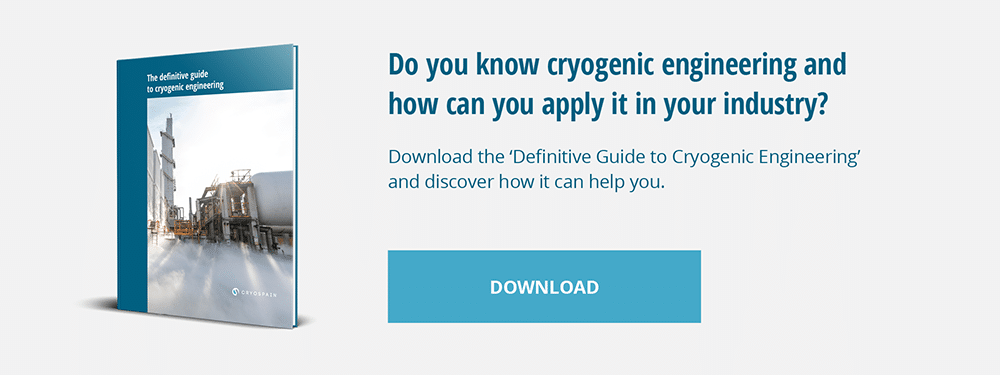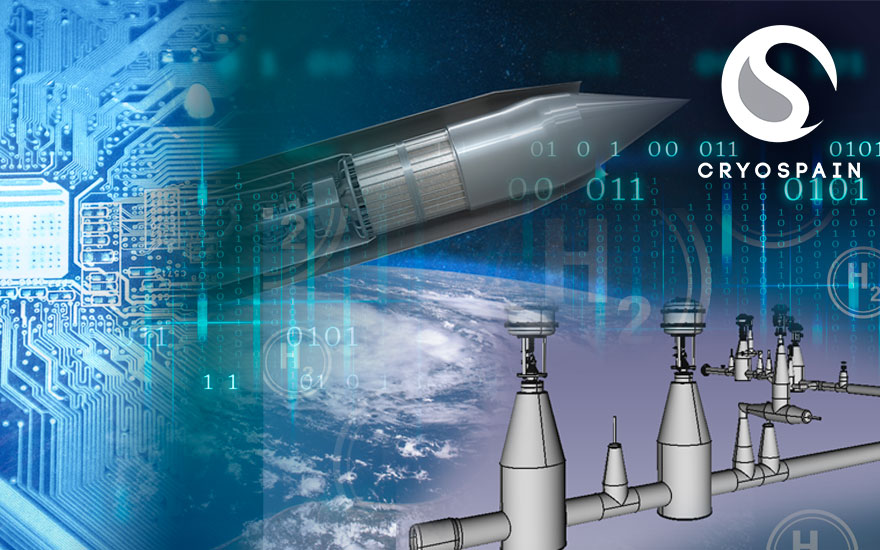Cryogenics as a technology can be summed up as fuel liquified and stored at very low temperatures. To take a topical subject as an example, cryogenics are at the heart of any rocket launch, as the liquid hydrogen and oxygen provide higher combustion than any other fuel.
The Future of the cryogenic engineering industry
The cryogenic industrial equipment market is expected to show tremendous growth in the coming half-decade:about 6.4% CAGR between the year 2020 and 2025. The cryogenic equipment market value was at 18.42 billion USD in 2018 and is expected to rise to 31.68 billion USD by 2026. A country’s economy is mainly built upon its manufacturing industry; which is why the growth and expansion of the manufacturing and industrial sector is a priority for countries looking for economic stability. Cryogenic equipment can be a vital factor in this growth.
LNG tanks and micro bulk tanks will play a major role in the expansion of the cryogenic equipment market in this period. Russia and Qatar are the largest producers of LNG in the world today. Such major-league players obviously require tanks for the storage of LNG. The electronic sector also plays an important part in the development of the cryogenic industry. Cryogenic processing is vital in increasing the functional life of circuit boards. They are also used in switching,semis and superconducting devices because the low temperatures decrease resistance, which can cause damage over time. Japan, China, and India are the fastest developing countries, meaning their need for cryogenic equipment is also increasing day by day.
Related article: The importance of the Liquified Natural Gas (LNG) industry
Advances in cryogenic engineering industry
Cryogenic equipment is already central to developments across industries. Production of space cryocooler has shown great performance and capability to date, leading to increased use of active refrigeration in space. The use of superconductors, cryogenic hydrogen systems to power electric aircraft, hydrogen fuel cells and hydrogen as fuel in rocket propulsion are further recent developments. So, the industry has a lot of very productive steps to be excited about.
In recent years, many conferences have been held to spread awareness of cryogenic engineering and cryogenic equipment. Due to the low temperatures required to achieve superconductivity, the most common materials are usually cooled with liquid helium. These are some of the most outstanding advances in cryogenic engineering:
●Electric Industry: Fully electric aircraft that use cryogenic liquid hydrogen as an energy storage method; NASA is working on a project to create an aircraft that works on a cryogenic hydrogen fuel cell system. Hydrogen-based aircraft can, crucially, deliver a higher range. These aircraft’s systems will contain compressed hydrogen to start the process of PEM fuel cells. All of the above are exciting indications of the blistering pace at which the cryogenic electric industry is moving .
● Hydrogen Chemical Energy: Hydrogen’s chemical energy is converted into electrical energy through a series of fuel cells. The low-temperature requirements of hydrogen systems also provide the opportunity to utilize superconducting power transmission. The fuel cell converts the chemical energy from hydrogen and ambient oxygen to generate power for an electric motor. This electric motor later provides rotational energy.
● Fuel Cell: Hydrogen is kept in a cryogenic tank to have greater autonomy, as it can store more hydrogen for cryogenic storage. The liquid hydrogen is kept under pressure in these tanks. This hydrogen is used for cooling and heating. There are almost 450 hydrogen storage sites present in the US, but the largest tank for storing liquid hydrogen is in Florida. Cryogenic storage of hydrogen is beneficial and has a lot of potential value to offer. It is not only economical at large production rates, the storage also lasts longer.
● Rocket Engine: Cryogenic rocket engines that comprise cryogenic fuel and oxidizer. The H2-O2 combination allows for specific impulses superior to the other pairs of propellants and is necessary for some specific applications such as in vehicles with a single step to orbit. A cryogenic rocket engine is more beneficial and it delivers more thrust for every kg of propellant. It goes without saying that it is also far more suitable for solid and liquid engines. These engines work as a booster. Today, India, Japan, France and China are the only states which enjoy the privilege of having access to these revolutionary technologies.
Keep learning: How to revolutionize your industrial engineering projects through cryogenic technology
Advantages of the technologies we offer clients here at Cryospain
LIN and LOX tanks, Cryoline pipes/cryopipes, Cryoline refrigerators and LCO2 vaporizers.
- LIN & LOX tanks – All the important gases that possess a significant market value are kept in these tanks. These tanks mainly store Liquid oxygen and liquid nitrogen. Theyare the most effective storage solution, farcheaper, simpler-to-use and with a long storage life.
- CRYOLINE: Cryolines provide a changeable filling system. Excellent protection from temperature transfer and ideal for the transport LIN, LOX, LAR, GNL, LHe, LH2 and LNG. Custom design with advanced 3D software and structural verification using finite element programs.
Latest Cryospain cryogenic engineering projects
In recent months we have been working on advanced cryogenic engineering projects like:
- A Flat-bottom nitrogen storage tank in Italy.
- A Vacuum pipelines project in Europe.
- A Liquid hydrogen liquefier plant in Europe.
- Bunkering projects in Rotterdam, Gothenburg, Bilbao and Santander.
- Liquid nitrogen storage tanks in India and Arizona.
- Use of LNG as a marine fuel, NGV station in Huelva.
Interested in learning the kind of projects we make a reality for our clients? Contact us today and our experts will talk you through what we can do for you.











 Contacte-nos
Contacte-nos